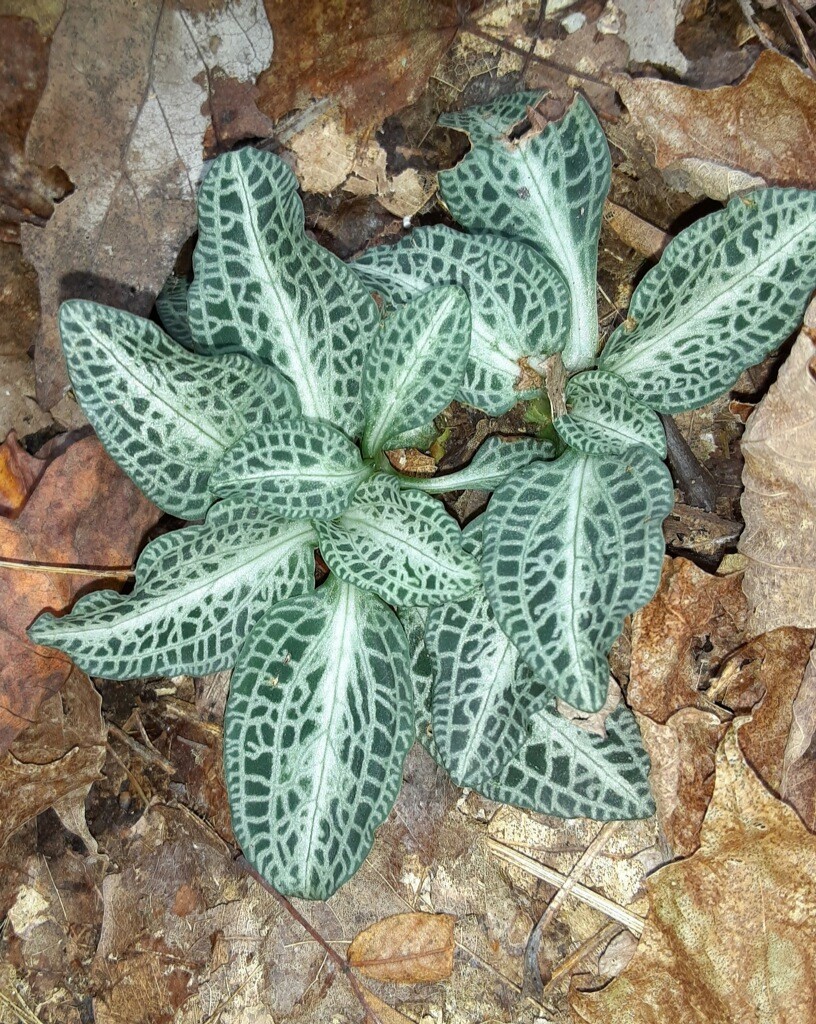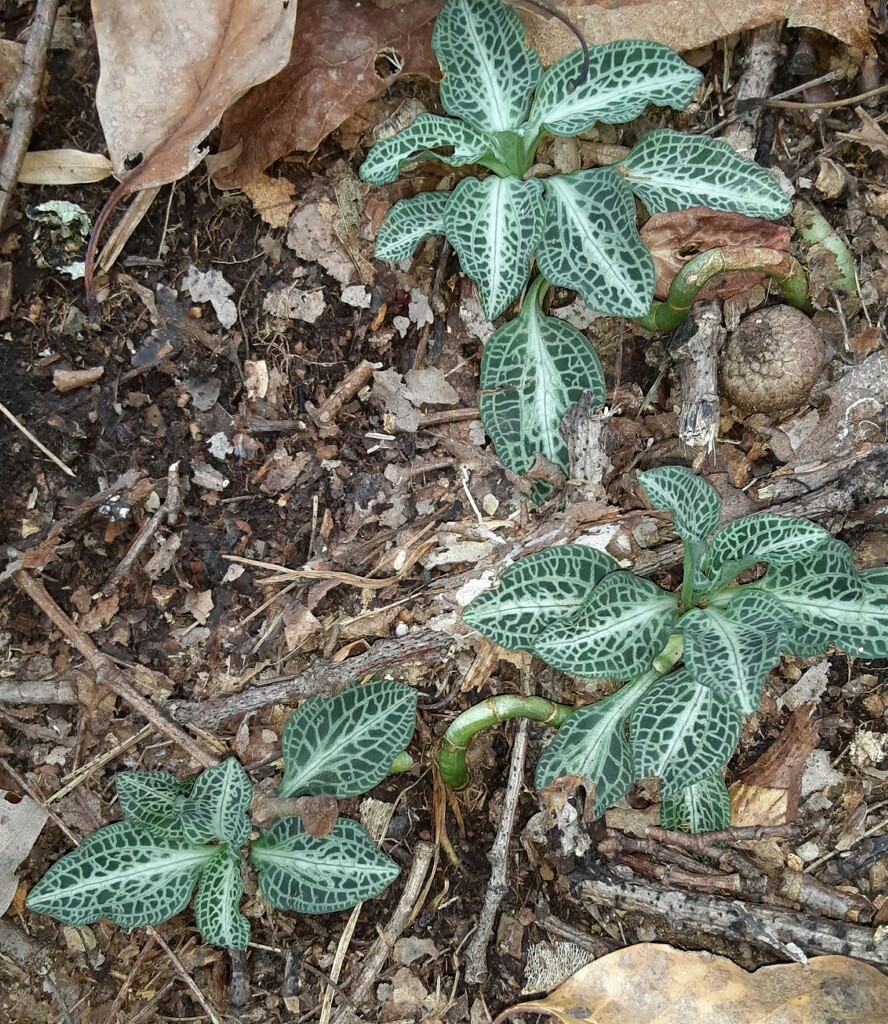By, Susan Sprout
The beautiful and very unique leaves of Rattlesnake Plantain caught my attention as they peeked out from the leaf litter along a trail at the WMWA.

This native terrestrial orchid is a member of the second largest plant family on earth with over 28,000 species. Sixty are native to Pennsylvania, many of them rare and threatened in the wild. I found these plants growing on a slight incline among mixed hardwoods and conifers. They do well in dry, sandy to moist soils, but cannot thrive in water-logged soils that do not drain – hence on an incline! Physical characteristics lead to the naming of many plants. In this case, fine, downy hairs on stems, rhizomes, and leaves gave the scientific name, Goodyera pubscens. The checkered, silvery pattern on the leaves that look like the scales of a snake’s skin and the shape like the sole of a human foot gave the name Rattlesnake Plantain (Latin – planta).
Once a year, sometime between May and August, a mature plant (four to eight years of age) will send up from its basal rosette of leaves, a leafless stalk of small white flowers that look similar to those in the photograph of Nodding Ladies’ Tresses in an earlier post during the week of September 27. After flowering, the fleshy rhizome of the plant will grow one to three offshoots which will live on after the original rhizome dies. Rattlesnake Plantain’s seeds are minute and abundant like dust. Charles Darwin thought if all the seeds of a single orchid would live and grow into plants, the great-grandchildren of that single orchid plant would “cover the earth in one continuous carpet.” He was not aware that those plentiful seeds need some help to grow. With no energy reserve in the tiny seeds, orchids require a special relationship with a mycorrhizal fungus or symbiont (AKA body buddy) that will provide the carbon needed to grow. The more, the better the growth! Some established orchids will continue to get nutrients from fungi as adults which can also help them tolerate stress.

There are two other species of Goodyera that grow in Pennsylvania, Dwarf and Checkered. Both are rare. The leaves of Rattlesnake Plantain have white, silvery lines on both sides of the center mid-rib. That is what helped me Identify them!


